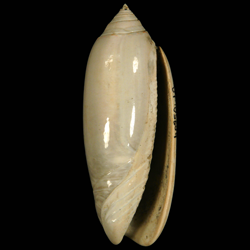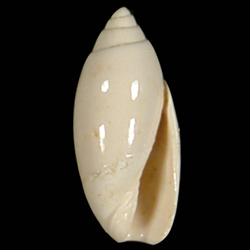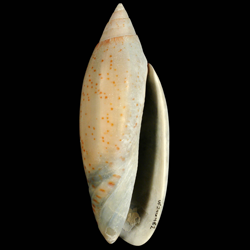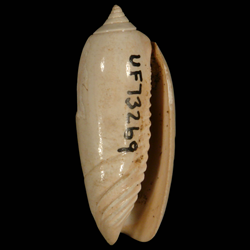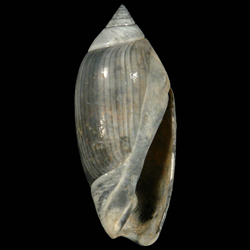
Olividae

- Phylum: Mollusca
- Class: Gastropoda
- Order: Neogastropoda
- Family: Olividae
Overview
Common name: Olive shells
Key morphological features: The Olividae are small to medium-sized gastropods with narrow, elongated, almost cylindrical, solid shells. The spire height ranges from low to medium and the siphonal canal is truncated and notched. Shells of the Olividae are very smooth and polished and often exhibit dramatic color patterns. The aperture is long and slender, extending almost the entire length of the shell in some species. The labrum profile is generally straight and the interior surface smooth. The columella exhibits fine plications along its length in most species, some of which towards the anterior end of the shell extend out from the aperture and curve anteriorly. Sources: Davies, A.M. 1971. Tertiary Faunas Vol. 1, second edition. New York: American Elsevier Publishing Company, Inc. 571 pp.; Tunnell Jr., J.W., Andrews, J., Barrera, N.C., Moretzsohn, F. 2010. Encyclopedia of Texas Seashells. College Station: Texas A&M University Press. 512 pp.
Geological range: Upper Cretaceous to Recent (Davies, 1971).
Geographic distribution: A distributional map for modern Olividae may be accessed from OBIS. A distributional map for ancient Olividae may be accessed from the Paleobiology Database.
Diversity: There are 341 recognized living species of Olividae and 22 genera (WoRMS database, unvetted). The Paleobiology Database recognizes 22 fossil genera and 427 fossil species of Olividae (unvetted).
Paleoecology: The extant Olividae are marine predatory gastropods or scavengers. They inhabit sandy substrates from intertidal to shallow subtidal depths, primarily at tropical and subtropical latitudes worldwide. Sources: Tunnell et al. (2010); Harasewych, M.G., Moretzsohn, F. 2010. The book of shells. Chicago: The University of Chicago Press. 656 pp.
Phylogenetic status: Unknown.
